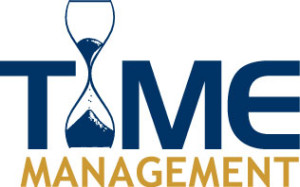In order for any organization to scale leaders must be able to take on new responsibilities and have time for strategic planning and organization of resources.
In my last two articles,“Delegating Authority & Responsibility for Employee Empowerment” and “How to Delegate” I covered the steps to effective delegation including the importance of defining an employee’s level of authority in carrying out their tasks and making decisions.
I spoke to a client shortly after I published the last article and he expressed how it all makes sense but often he needs to choose to do tasks himself that he would like to delegate but can’t because of time restraints. He said it takes too long to explain and show someone how to do something so he ends up doing it himself.
Time Management Matrix
So how do you break that cycle of having to do things yourself because time doesn’t permit to show someone else how to do the tasks or take on the new responsibility?
In his best-selling book “First Things First”author Stephen Covey explains The Time Management Matrix and how to use it to analyse and better plan your time. Delegating in the diagram below falls into the quadrant of Important Not Urgent.

By having a goal in mind you can more easily identify time wasters and take steps to eliminate them. Obviously if you look at the activities that fall into each of the quadrants on the Time Management Matrix you can take action to reduce time wasting activities and get more focused.Create Goals The question becomes how to spend more time in quadrant two in order to drive delegation and empowerment. The way to do this is to identify your delegation or empowerment projects and schedule time to execute them.
I’ll get into more depth about time management in upcoming articles and videos. One thing is to consider is procrastination and how to address that.
Time Analysis
 To plan your time better you first need insight into how you’re spending your time now. You can track and record your activities manually using a weekly agenda form that you can download here. You can also use one of the numerous software programs or apps such as RescueTime or Toggl.
To plan your time better you first need insight into how you’re spending your time now. You can track and record your activities manually using a weekly agenda form that you can download here. You can also use one of the numerous software programs or apps such as RescueTime or Toggl.
Once you have tracked and analysed how you use your time you can come back to the Time Management Matrix and take conscious to change your work habits. Of course changing habits is quite hard so you need to be motivated and visualize the benefits.
Whether you track your activities manually or using technology, the principles of time management and habit modification are the same. We all function within the same framework of a day of 24 hours. There is no magic pill that will make you more productive. It begins with awareness and a goal to improve.
Delegation is an essential leadership activity that every leader needs to develop in order to grow their department or business and leverage their largest asset, people.
Stephen Goldberg


